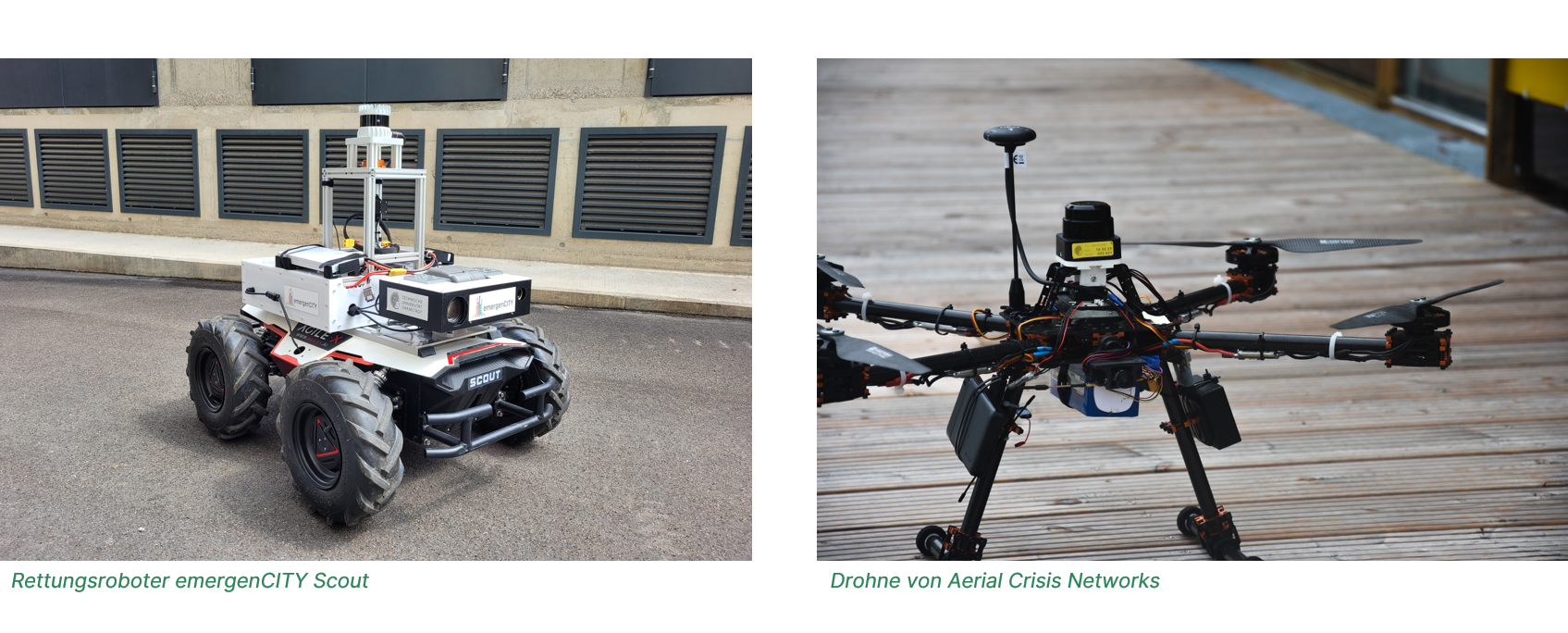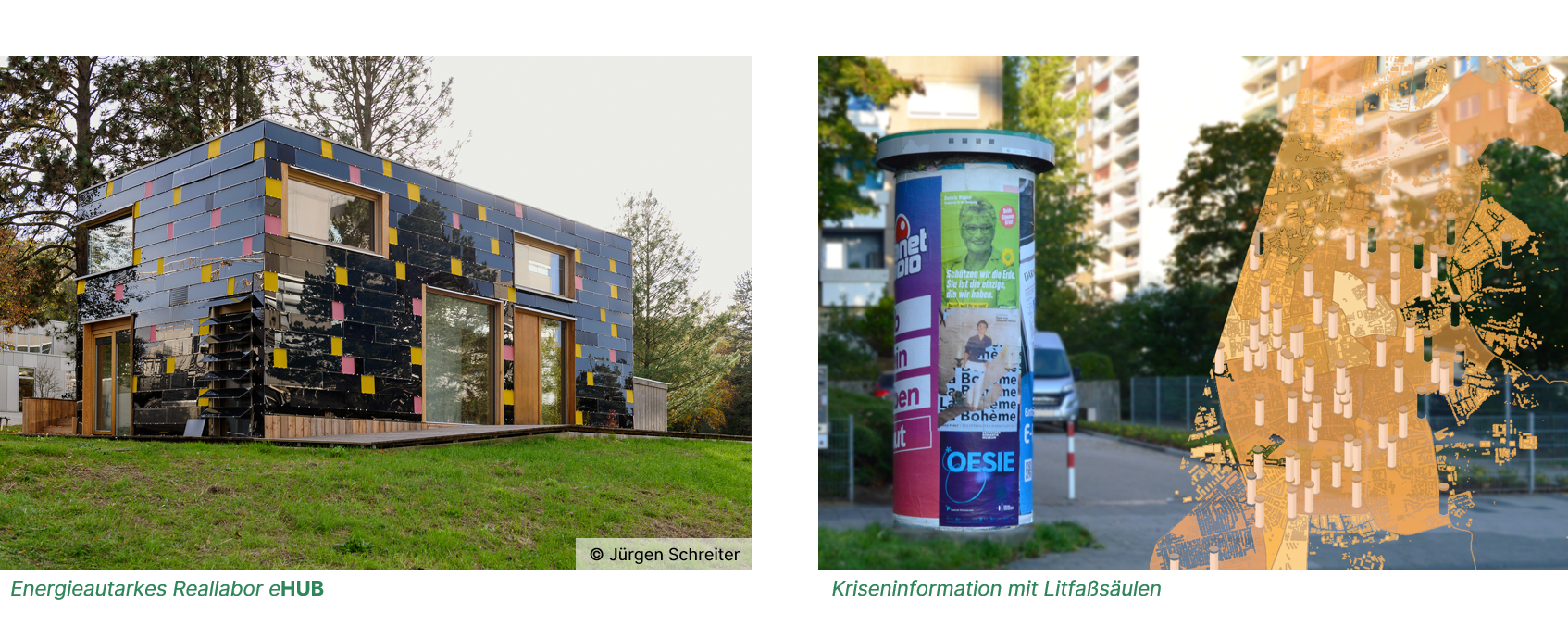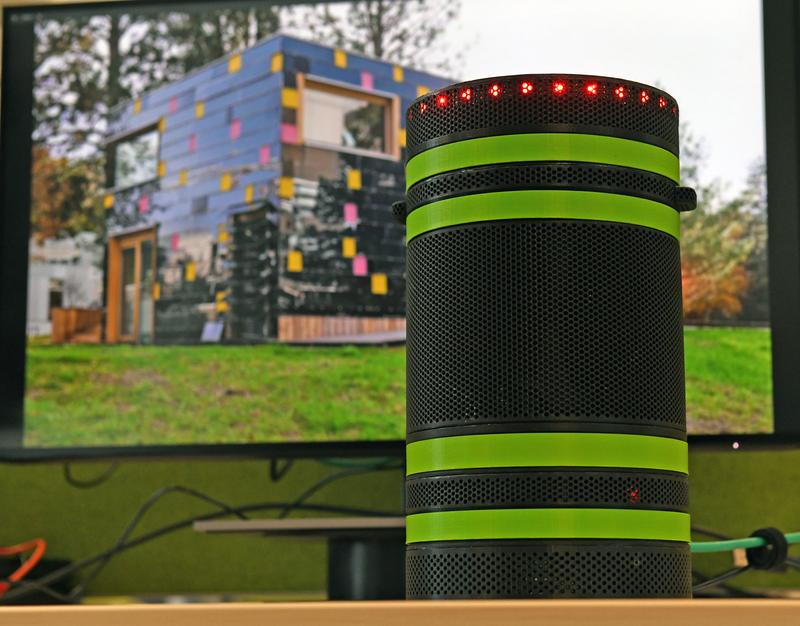The Warning Day on December 08 attracts public attention throughout Germany. After the disaster of the Warning Day 2020, the cancellation in 2021 and this year’s postponement from 08 September to 08 December, finally comes the rehearsal for the emergency. The warning mix for Germany is being tested. Cell broadcasting is to be used throughout Germany for the first time, enabling the population to be warned comprehensively.
But it is not only the functioning warning that is crucial in an emergency: Successful crisis management means much more. Prof. Matthias Hollick, Scientific Coordinator of emergenCITY states: “Warnings can be vital and provide important information and initial recommendations for those affected. But we should not look at these in isolation! We need to ask: warning, but what comes next?”
emergenCITY explores solutions that are useful at all stages of crises. The combined expertise of around 90 scientists is used to work on interdisciplinary projects that show what better crisis management can look like. The question is: What happens after the warning in the further course of a crisis? Which technologies will help us through the crisis in the best possible way? And what measures can even be taken in advance? Because good crisis management starts with preparation. For example, surveys have examined the preparedness of local emergency management agencies for emergencies and issued recommendations for better networking with key stakeholders in critical infrastructure and the population. “Above all, cities need to develop joint crisis management plans with the population to be prepared for crisis events,” said Prof. Michèle Knodt, deputy coordinator of emergenCITY, “Citizens need to know how to act following the warning.”
The initial crisis response phase also needs constant research and development: At the moment of a crisis, action must be taken immediately - even though areas may be difficult to access, mobile networks may fail, and power and water infrastructures may collapse. Accurate situational information and emergency communication capabilities are particularly important. emergenCITY is therefore developing a task force of digital helpers that provide reconnaissance and perform many useful tasks. These include the Scout rescue robot, which is equipped with systems such as radar, LiDAR, Geiger counter, infrared camera and camera from danger zones to provide a situation picture and search for missing persons. Research on the rescue robots is being conducted in collaboration with the successful robotics team HECTOR at Darmstadt Technical University and the German Center for Rescue Robotics (DRZ). Thus, in case of a crisis, the robots Scout from emergenCITY and Telemax from DRZ can work together and complement each other with their mission capabilities.
 Another research team, Aerial Crisis Networks (ACN), is again working with unmanned aerial systems such as drones. These can perform a number of practical tasks and assist responders. They can take aerial photographs and measurements of affected areas. But it is also conceivable to mount medicines on them as payloads and transport them to crisis areas. emergenCITY’s research even goes one step further: with the help of several drones, a basic decentralized communication network is to be established. “Drones are already part of the arsenal of rescue forces, but they are primarily used for reconnaissance. With our research, we want to expand the use cases even with existing systems,” said ACN mission spokesman Dr. Lars Baumgärtner. Equipped with appropriate technology, a reconnaissance or transport drone could simultaneously rebuild a collapsed cellular network locally while flying over the crisis area - providing critical infrastructure.
Another research team, Aerial Crisis Networks (ACN), is again working with unmanned aerial systems such as drones. These can perform a number of practical tasks and assist responders. They can take aerial photographs and measurements of affected areas. But it is also conceivable to mount medicines on them as payloads and transport them to crisis areas. emergenCITY’s research even goes one step further: with the help of several drones, a basic decentralized communication network is to be established. “Drones are already part of the arsenal of rescue forces, but they are primarily used for reconnaissance. With our research, we want to expand the use cases even with existing systems,” said ACN mission spokesman Dr. Lars Baumgärtner. Equipped with appropriate technology, a reconnaissance or transport drone could simultaneously rebuild a collapsed cellular network locally while flying over the crisis area - providing critical infrastructure.
Among others, the team of the research mission eHUB is concerned about the further course of crises. The case of a supraregional, prolonged blackout with cascading failure of important critical infrastructures is being tested in the new eHUB real laboratory on the Lichtwiese campus of the TU Darmstadt. The energy-autonomous smart home, which is equipped with solar panels on the façade and roof, will not only remain in operation on its own for several days, but will also act as an information HUB for the population, an operations center and a charging station for the drone fleet on a test basis. “A network consisting of a large number of eHUBs could make an important contribution to maintaining basic services such as energy supply or communication in the event of a blackout during emergency operations,” said eHUB mission spokesman Dr. Joachim Schulze. The eHUB will be opened and accessible to visitors next spring.
 In the coping phase, the population needs to be kept informed of all relief options. Therefore, the project READit deals with the dissemination of information about the crisis events in the urban space, with the aim to reach especially vulnerable groups of the population. The idea is to upgrade advertising pillars and display or announce emergency information. This is because the pillars can be found in large numbers and distributed throughout many medium-sized and large German cities, where they have helped shape the cityscape since the beginning of the 20th century. “The advertising pillar is the street furniture of all and would continue to experience great acceptance by city dwellers in the smart version,” says Dr. Joachim Schulze, who is also involved in this project. They are located in highly frequented places and offer enough space to install the appropriate technology inside and keep it running with battery storage and solar panels in the event of a crisis. The smart advertising pillars could communicate via a modern radio system such as LoRa, because the individual pillars are usually not far from each other - within Darmstadt, it is about 300 meters to the next advertising pillar in each case.
In the coping phase, the population needs to be kept informed of all relief options. Therefore, the project READit deals with the dissemination of information about the crisis events in the urban space, with the aim to reach especially vulnerable groups of the population. The idea is to upgrade advertising pillars and display or announce emergency information. This is because the pillars can be found in large numbers and distributed throughout many medium-sized and large German cities, where they have helped shape the cityscape since the beginning of the 20th century. “The advertising pillar is the street furniture of all and would continue to experience great acceptance by city dwellers in the smart version,” says Dr. Joachim Schulze, who is also involved in this project. They are located in highly frequented places and offer enough space to install the appropriate technology inside and keep it running with battery storage and solar panels in the event of a crisis. The smart advertising pillars could communicate via a modern radio system such as LoRa, because the individual pillars are usually not far from each other - within Darmstadt, it is about 300 meters to the next advertising pillar in each case.
The time after and between crises is also important for the researchers: learning from past crises is an integral part of emergenCITY, because by looking back at what happened, important conclusions can be drawn about needed strategies and technologies. This includes interviewing people directly affected and actors involved in crisis management, analyzing data from the crisis, and likewise looking at historical crisis events. For example, one research project is currently evaluating coping strategies from the 2021 floods - the resulting recommendations will soon be published in a policy paper.
These and many other projects are being researched at emergenCITY, with knowledge from the fields of computer science, electrical engineering and information technology, mechanical engineering, civil and environmental engineering, social and historical sciences, architecture, economics and law. The scientists are united by their focus on resilience-based approaches: Because the next crisis is not yet known - good preparation therefore means remaining capable of action through resilient and flexible systems and also being able to react quickly to unforeseen situations.
But now back to the warning day: The fact that the warning day could become a more broadly conceived crisis exercise day in the future is the subject of a short story that looks several years into the future.



